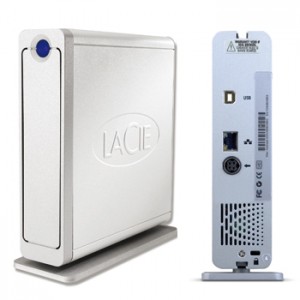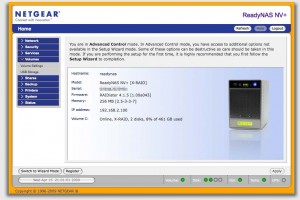Like a lot of other computer users, I seem to have a lot of data which is irreplaceable. Not including music and video (since I have the originals on disk anyway) I’m still pushing almost 1TB (1000GB). This data is made up of 13 years of email history, 10 years worth of digital photos, source code and incremental server backups.
At the end of the day, this data is priceless. I can’t go back and take all my photos, it’d be near impossible to rewrite source code from scratch and a loss server backups would result in a loss of income.
I’ve tended to keep important copies of data at home and on servers but even this isn’t ideal.
Hard drives are now pushing 2TB in size. The amount of data on these is huge – almost 500 DVD quality movies, 3000 uncompressed audio CDs, 200000 professional quality digital photos, or if you’re a sucker for punishment, over 2000000000000 typed characters of a (mind bogglingly long) novel. Imagine losing all of this information when you least expect it. Heck, even just copying that data to a backup drive at 100 megabytes per second will take close to 6 hours.
I own a number of Lacie Ethernet Disk Minis. These are a 500GB network attached storage device but they have a couple of drawbacks…. they only have a single hard drive in them and the disks are spinning 24×7. I had a drive go down last week. After a very stressful 3 hours trying to fix the problem and hearing the hard drive go “clink, clink, clink” I managed to trace the problem to a faulty power supply which was easily replaced. I managed to save myself from the loss of about 2 months worth of non-backed up work.
I was lucky, but like a cat with nine lives, luck will eventually run out.

Optical storage such as DVD is still rather low density (less than 10GB) and although good quality (expensive) media is guaranteed for 100 years, the guarantee only covers a replacement disk, not replacing the data on it. Because of this, hard drives are still the media of choice for backing up large amounts of data, even if there is a risk that one day, it will fail to spin into life.
I started looking at network attached storage alternatives that support RAID.
I played around withFreeNAS, a Linux based distribution with raid capability. It looked perfect for the job but I didn’t have the space to have a large computer on all the time and shuttle PCs only fit two hard drives in them.
After reading a lot of reviews online, I settled on the Netgear ReadyNAS range. These aren’t the cheapest option available, but the consistent ratings swayed me and my budget. The two systems I considered were the DUO, a two bay system and the NV+, a four bay system. It was a tough choice. The DUO comes in at around £200 without drives while the NV+ is pushing £450.
The main deciding point for me was that the DUO only supports RAID mirroring. With two of the largest drives available (say 2GB), I would only end up with a maximum capacity of 2GB. The NV+ on the other hand, having 4 bays and supporting X-RAID and RAID 5 meant that I would end up with three drives capacity, or based on using 2GB drives, a total capacity of 2GB while still being protected from any one drive failing.
Expandability and common sense finally won and I settled on the NV+.
The NV+ is a wonderful piece of kit. It supports all of the major protocols for Linux, Mac and PC. The drives can be set to spin down after inactivity and it can be set up to perform backup tasks on schedule. One of the neat backup features in the firmware is that I can set it to ftp to a server every couple of hours and download all new (or changed) files.

The expandability of this device is brilliant. Drives are hot-swappable and the system automatically configures itself as disks are added or removed. The only caveat here is to allow for RAID re-synching which is around 2 hours for a 500GB drive.
If you’ve got data which is irreplaceable (which I expect you do), I high recommend something like the ReadyNas.
There is a wealth of information at http://www.readynas.com

